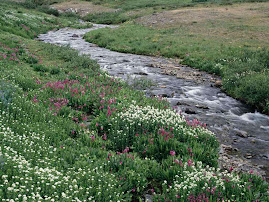Throwing light on light houses
The lighthouse has played a leading role in the development of Mumbai as a major habour.
Sunk Rock Lighthouse : It is one of the three lighthouses in the South Mamba harbour off the coast of Mumbai . It is red and yellow checkered tower, located 5km (3 miles from the Gateway of India)
Kanhoji Angre Island Light house :Kanhoji Angre Island previously known as Khanderi (Kennery) island is an off shoot hillock off the western ghat ranges and is situated opposite Thal fishing port in Alibagh district south of Bombay Bombay
Uttan Lighthouse :Situated 23 nautical miles and is positioned at 18 0 52.7 N and 72 0 48’ E. By Road it is 12 km from Bhayander local railway station and is situated on a hillock, south of the entrance of the Vasai creek. It is 52 mt. high circular tower (red, white and black colour), commissioned in 1960.
Prong’s Lighthouse :It is the southernmost of the three lighthouses. The other two are Sunk Rock and Dolphin. The Prong’s Lighthouse was built in 1875, the same year eponimus Sassoon Dock was built by David Sassoon. The Lighthouse can be reached by foot from southern end of Colaba at low tide during spring. 10-second white flashing beam can be seen at a distance of 30 kms (18 miles). The Lighthouse had a cannon during the British rule to secure the bay.
Arnala Lighthouse :Arnala Lighthouse is about 10 km West by road from Virar Railway station (Mumbai –Surat- Trunk Route). Posititoned at 19 degree 27.4’N and 72 degree 44.8’E, is accessible though pucca road upto the lighthouse. Flashes (3) white and red signals every 15 seconds. A new 15 m. MS trestle tower replaced the earlier structure and a DA gas flasher inside 300 mm optic and a sun valve were installed over this tower in 1967. Under the scheme of modernization a new 30 m GI trestle with arrangement to hoist storm warning signals was erected in 1996 and a revolving light (Tideland make) was installed over it. The new light was commissioned on 24th June 1996 .
Throwing light on light houses
The lighthouse has played a leading role in the development of Mumbai as a major habour.
Sunk Rock Lighthouse : It is one of the three lighthouses in the South Mamba harbour off the coast of Mumbai . It is red and yellow checkered tower, located 5km (3 miles from the Gateway of India)
Kanhoji Angre Island Light house :Kanhoji Angre Island previously known as Khanderi (Kennery) island is an off shoot hillock off the western ghat ranges and is situated opposite Thal fishing port in Alibagh district south of Bombay Bombay
Uttan Lighthouse :Situated 23 nautical miles and is positioned at 18 0 52.7 N and 72 0 48’ E. By Road it is 12 km from Bhayander local railway station and is situated on a hillock, south of the entrance of the Vasai creek. It is 52 mt. high circular tower (red, white and black colour), commissioned in 1960.
Prong’s Lighthouse :It is the southernmost of the three lighthouses. The other two are Sunk Rock and Dolphin. The Prong’s Lighthouse was built in 1875, the same year eponimus Sassoon Dock was built by David Sassoon. The Lighthouse can be reached by foot from southern end of Colaba at low tide during spring. 10-second white flashing beam can be seen at a distance of 30 kms (18 miles). The Lighthouse had a cannon during the British rule to secure the bay.
Arnala Lighthouse :Arnala Lighthouse is about 10 km West by road from Virar Railway station (Mumbai –Surat- Trunk Route). Posititoned at 19 degree 27.4’N and 72 degree 44.8’E, is accessible though pucca road upto the lighthouse. Flashes (3) white and red signals every 15 seconds. A new 15 m. MS trestle tower replaced the earlier structure and a DA gas flasher inside 300 mm optic and a sun valve were installed over this tower in 1967. Under the scheme of modernization a new 30 m GI trestle with arrangement to hoist storm warning signals was erected in 1996 and a revolving light (Tideland make) was installed over it. The new light was commissioned on 24th June 1996 .
Sunk Rock Lighthouse : It is one of the three lighthouses in the South Mamba harbour off the coast of






